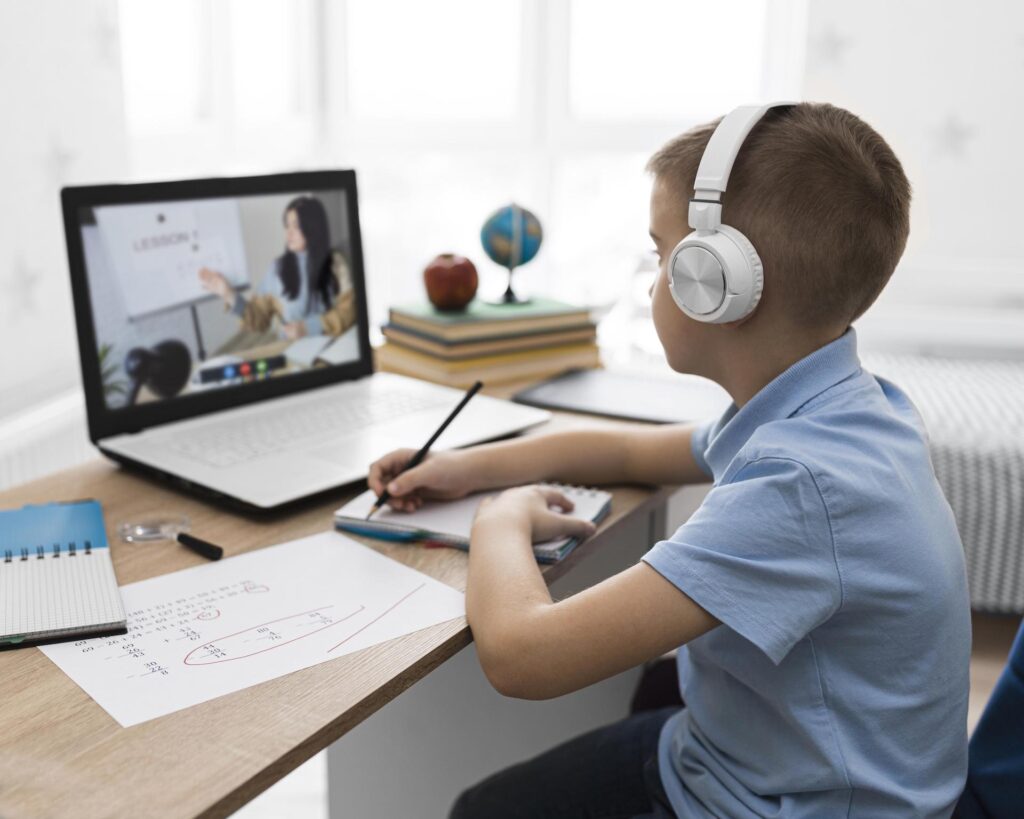Empowering distance learners: key principles for Filipinos
Blogs
February 6, 2023

Due to the recent pandemic, distance learning became the primary mode of educational instruction in the Philippines for most of 2020 and 2021. The shift from holding face-to-face classes to using various modalities of distance learning is completely unprecedented, and the Department of Education (DepEd) was tasked to incorporate modern solutions into the country’s educational system to meet the needs of Filipino learners. For months, educators worked overtime to adapt existing academic programs to a digital environment, which is meant to make these resources more accessible to students staying in their homes.
Soon enough, however, it became clear that students will need more than just modernized curricula to be able to adjust and thrive in a distance-learning setup. Students may also need a variety of technology solutions that empower them to learn through a variety of modes, including through remote learning, face-to-face classes, as well as hybrid learning setups that incorporate elements of both.
This task requires systematic and well-coordinated efforts from national agencies, local government units, public and private schools, partners in the private sector, parents, and just about every stakeholder in the Philippine educational system. Here are some of the lessons that the past several months have imparted which may eventually ensure that every Filipino student has access to quality education and instruction, regardless of where they are.
A robust digital infrastructure is essential to the success of distance learning programs
Online classes became the go-to option for schools and homes that are based in the largest cities in the country. Many of the students in these areas have easy access to a relatively fast and stable internet connection at home, after all.
Unfortunately, this isn’t the case for schools and homes that are located mostly outside the coverage zones of the country’s major telco providers. Without a stable internet connection, neither the schools nor their students have the option to attend live online classes or watch recorded lessons. It’s a must, then, to ensure that internet access is within reach even in the remotest parts of the country.
This is a challenge that digital infrastructure developers, with the help of national and local government units, are trying to address. In particular, Aboitiz InfraCapital’s joint initiative with Partner Group, Unity Digital Infrastructure Inc., is focused on constructing common towers in different areas around the country. Additionally, Aboitiz InfraCapital has also invested in developing small cell sites in key areas around the Philippines. By using these structures, mobile network operators can fast-track their expansion and improve their service reliability at reduced costs. This, then, will make online learning a more accessible option to more families.
Students can still be provided with alternatives to digital learning environments
Compared to other methods of conducting distance learning, the convenience afforded by holding classes online is unparalleled. However, families need to make significant investments in digital solutions to enable their children to attend online classes regularly. Every student in the family must have a laptop, tablet, or smartphone, and the family must also sign up for internet services or purchase data plans so that they can go online whenever they need to. Basic laptops these days can easily cost upwards of P12,000 per unit, while a student can use up data plans exceeding P300 per month to attend their classes regularly. But the reality is not all Filipino families can afford to spend money on these.
To ensure equal access to education, schools should offer alternatives to online learning. In many places, it’s an option for parents to pick up students’ distance learning packets from their respective schools at the start of every grading period, then drop off the accomplished worksheets and projects at the end of the said period. The student’s performance will then be graded according to their output and submissions, not just their attendance and class participation.
Hybrid learning may be a viable compromise
Hybrid learning (also called blended learning) may prove to be a more practical alternative compared to either purely face-to-face or online classes. Currently, the Department of Education (DepEd) is implementing hybrid learning as part of the transition to permanent face-to-face classes. However, it is now considering institutionalizing this learning modality.
In a recent paper covering the effects of remote learning during the height of the COVID-19 pandemic, researchers found that purely digital learning affected students’ mental health, which led to poor performance and overall degradation of psychosocial skills. However, COVID-19 has continued to be a public health risk, requiring some kind of strategy to mitigate the effects of the illness. Blended learning offers a viable way to not only improve academic outcomes but also mitigate the risks posed by the lack of social distancing.
Additionally, this mode can somewhat lessen the financial burden on parents by limiting the data they need to purchase for students. It may also help relieve some of the pressure on educators who have to contend with ever-increasing class sizes amid an ongoing classroom shortage.
Empowering parents, educators, and students through distance learning programs
Empowering students to make the most of distance learning setups also means turning their parents into active participants in their formal education. It’s a must for parents or guardians to understand the opportunities presented by distance learning and how they can foster an environment that’s conducive to studying in their homes.
In Valenzuela, for example, the local government has redesigned its annual Nanay-Teacher Program to focus on the challenges brought about by distance and blended learning setups. The program provides parents with strategies to address the mental well-being of their children while they’re studying at home.
The current situation is proving that distance learning is a viable option for many students and schools. However, a lot of changes still need to be made to ensure that remote learning setups will be able to sustain the quality of education that students get out of the Philippine public and private education programs. As the Philippines embraces the post-pandemic era, Filipinos are likely to see a variety of hybrid setups that combine face-to-face and remote learning modes, depending on the situation.


























